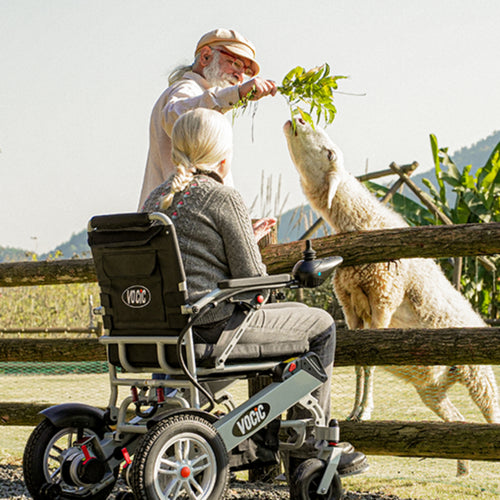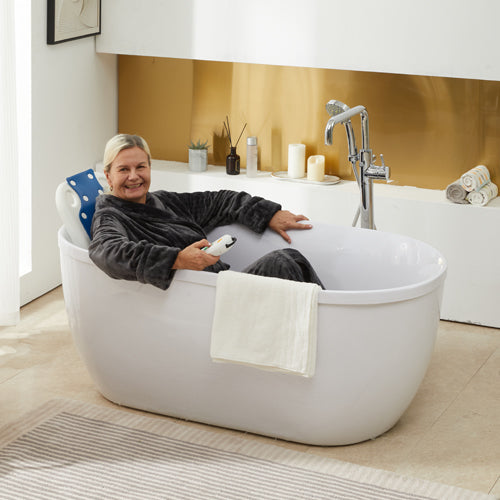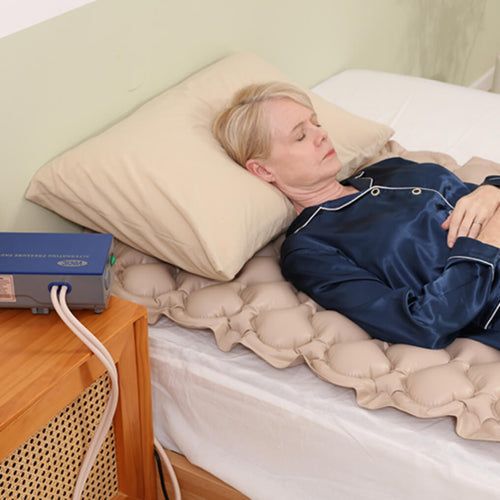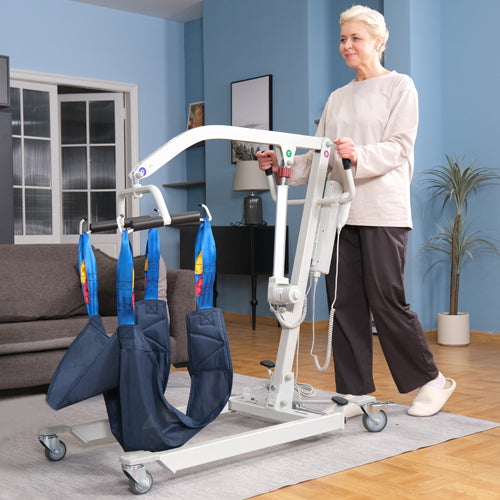When purchasing a mobility scooter for the elderly, you might have the question: 3 wheel or 4 wheel mobility scooters- which one is better? What are the differences between 3 wheel and 4 wheel mobility scooters for the elderly? How do I choose the right one? This article aims to address these uncertainties, starting with what are mobility scooters.

What are Mobility Scooters?
A mobility scooter is an electrically powered vehicle designed to aid individuals who face challenges in walking or standing for prolonged periods, especially the elderly and adults who are recovering from illness. They are also suitable for adults who are looking for mobility tools. Typically, these scooters include a seat positioned above three or four wheels, a flat surface for the user's feet, handlebars or a tiller for steering, and a motor powered by a battery.
People with a range of conditions or disabilities make use of mobility scooters; that’s why we sometimes call them mobility scooters for the disabled, including but not limited to:
- Limited mobility is caused by age-related factors.
- Muscular or joint conditions that impact walking.
- Chronic illnesses or disabilities affecting mobility.
- Injuries or surgeries leading to temporary movement restrictions.
These mobility scooters offer users increased independence and the capability to move through both indoor and outdoor spaces. They are available in various models featuring different attributes such as adjustable seats, lights, and diverse speed settings. Mobility scooters play a vital role in improving mobility and enhancing the quality of life for individuals dealing with mobility challenges.

What are the Differences Between 3 Wheel and 4 Wheel Mobility Scooters for the Elderly?
So, what are the differences between 3 wheel and 4 wheel mobility scooters for senior citizens? These differences are primarily concentrated in the following aspects:
Size
The size of a 4 wheel mobility scooter for the elderly is generally larger than that of a 3 wheel. Consequently, 3 wheel mobility scooters are more suitable for indoor use, as they can navigate through doorways indoors more easily, while 4 wheel mobility scooters are better suited for outdoor use.
Weight
In general, the net weight of a 4 wheel mobility scooter for the senior population is likely to be heavier than that of a 3 wheel, as it has an additional wheel at the front.
Legroom
Due to the design structure of 3 wheel mobility scooters for the elderly, they tend to offer relatively spacious legroom, contributing to a more comfortable seating experience for users. In contrast, the wider body structure of 4 wheel mobility scooters for seniors may impose some limitations on legroom.

Turning Radius
Thanks to their design, 3 wheel mobility scooters for older adults are more maneuverable around objects and in narrow spaces. They also have a tighter turning radius compared to 4 wheel mobility scooters, making them ideal for indoor use, shopping malls, and public transport. 4 wheel mobility scooters for seniors citizens are better suited for outdoor use and navigating through rough terrain.
Stability
In general, a 4 wheel mobility scooter is considered more stable than a 3 wheel counterpart. Despite the presence of anti-tip features in most modern mobility scooters, such as the VOCIC 4 wheel mobility scooter for the elderly, the likelihood of tripping over is higher with a 3 wheel mobility scooter for seniors.
How to Choose Between 3 Wheel and 4 Wheel Mobility Scooters for the Elderly?
In addition to factors like legroom, size, and weight, the choice between a 3 wheel and 4 wheel mobility scooter also depends on the following factors:
Indoor and Outdoor Use
As mentioned above, for indoor use, a 3 wheel mobility scooter for the aging population may be more suitable, while a 4 wheel mobility scooter is better suited for outdoor use.
Distance
Additionally, 3 wheel mobility scooters are suitable for short-distance trips, such as shopping, visiting the neighborhood, or taking a stroll in the park. On the other hand, 4 wheel mobility scooters are ideal for longer journeys due to their enhanced stability and safety features.

Safety
If you are elderly with balance issues or those requiring bariatric support may find greater safety in a 4 wheel mobility scooter for the elderly. This will undoubtedly boost the confidence of these users in using a mobility scooter.
Price
As for pricing, 4 wheel mobility scooters typically come at a higher cost than their 3 wheel counterparts. The cost of a 3 wheel mobility scooter for the elderly population typically ranges around $1000, while a high-quality 4 wheel may be priced around $1000 to $3000.
Except for the factors mentioned above, you can check out the article from VOCIC—8 Tips about How to Choose Mobility Scooters for Adults, whether for 3 wheel or 4 wheel mobility scooters for the elderly, for a better decision.
Final Thought
The main differences between them lie in size, weight, legroom, turning radius, and stability. If you prefer a lightweight mobility scooter with extra legroom, you can opt for the 3 wheel mobility scooter for the elderly; if you plan to travel long distances, the 4 wheel mobility scooter may be a better choice. Additionally, regardless of the type of scooter you're interested in, you can visit the VOCIC senior scooter, which offers a variety of options, including 3 wheel and 4 wheel mobility scooters for sale.









